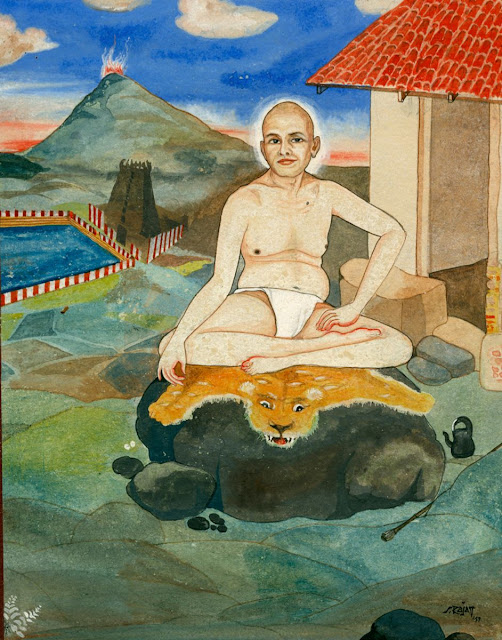Significance of Mahashivaratri Festival
Each month there is day known as Shivaratri and once a year there is Mahashivaratri (maha=great); The Great Night of Shiva. The dates of these occasions correspond to the phases of the moon and it is believed that the mind (which is adversely affected by the power of the moon) is less susceptible to low, animalistic forces and thus more tractable to the power of meditation and prayer.
It is for this reason that Mahashivaratri is believed to be the one 24-hour period in the year which is of the greatest benefit. It has been stated in the scriptures that if a man fasts, stays awake and meditates for the whole of Mahashivaratri, it will give him his best chance to achieve mastery of the mind and attain liberation.
Mahashivaratri always falls on the fourteenth day of the dark fortnight of Phalguna (February-March), and is dedicated to the worship of Lord Shiva. On this day devotees sing Shiva bhajans, recite verses from scriptures, offer prayers in the morning and evening, and some observe fasting throughout the day. People visit Shiva Temples and in the case of Arunachala, premier Shiva site of South India, circumambulation of Arunachala Hill is observed by many.
The name Shiva signifies a quality that means 'Auspicious' or 'The Auspicious One'. To a few, Shiva is Paramatman, Brahman, the Absolute, but many more prefer to see Shiva as a personal God given to compassion for his worshippers, and the dispenser of both spiritual and material blessings. Related to the Absolute concept is Shiva as Yoganath, the Lord of Yoga, wherein he becomes teacher, path and goal. As such he is the Adi Guru or Highest Guru of sannyasins who have renounced the world to attain the Absolute.
To continue reading more about the significance of this Festival go here to view a descriptive pictorial narrative. To view information and photographs specifically connected to the Mahashivaratri Festival of 2012 go to this link here.
The Temple will be packed on the night of Mahashivaratri and as tradition dictates will be OPEN throughout the night of March 10 -- March 11, 2013. The number of devotees coming to Tiruvannamalai to perform girivalam on the night of Mahashivaratri has always been small compared to Full Moon crowds, however each year larger number of pilgrims are now descending upon Tiruvannamalai in order to perform girivalam at this most famous Shiva Sthalam on the Great Night of the Lord.
There will be huge, beautiful coloured kolams decorating the floors of the Temple Compound, oil and ghee lamps around the Temple water tanks, an inspirational cultural programme including devotional singing and cultural dancing, Pujas of the 4 Kalas, performance of One Lakh Archana, and also a beautiful puja and abhiskeham of the Lingodbhavamurti located at the back of the Shiva Sannidhi.
Below is the programme timings (with translation) of the 2013 Mahashivaratri Festival to be conducted at Arunachaleswarar Temple, Tiruvannamalai.
Tami Nadu Religious Hindu Department, Tiruvannamalai
Mahashivaratri Invitation March 10, 2013
One Lakh Archana on Sunday 10-03-2013 at Tiruvannamalai, Arunachaleswarar Temple from 5 a.m. in the morning to 2 p.m. in the afternoon.
Ticket for the One Lakh Archana costs Rs.200/- and is available from the Temple Office.
Contact telephone number: (0)4175-252438
Festival Timings of Cultural Programmes March 10, 2013
6 p.m. to 7 p.m. Oothuvar Group Singing Devaram Music
7 p.m. to 8 p.m. Chennai Sivaallayam Group, Bharatnatyam
8 p.m. to 9 p.m. Vellore Sri Krishna Kala Mandir Group, Bharatnatyam
9 p.m. to 10 p.m. Gudiyatham Kalaivani Group, Bharatnatyam
10 p.m. to 11 p.m. Tiruvannamalai Kala Mandir Group, Bharatnatyam
11 p.m. to 2 a.m. Madras Veera Mani Raju and Malayil Swami, devotional singing
Timings of the 4 Kala Pujas
1st Kala -- 8.30 p.m. (March 10, 2013)
2nd Kala -- 11 p.m. (March 10, 2013)
3rd Kala -- 2 a.m. (March 11, 2013)
4th Kala -- 4 a.m. (March 11, 2013)
Lingodbhavamurti Puja
12 o’clock on the night of March 10-March 11, 2013
Lingodhava Abhishekam Puja






















































